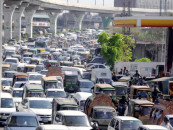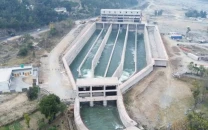Toilets and public policy
The only way of creating better public services is to embrace a culture of revenue recovery

The writer is a senior international development professional and a former civil servant. He has worked with Fortune 500 corporations in Pakistan and the US. He is an MBA from Washington University in St Louis
I did not mind paying the charge to use these impeccable facilities, with good quality hand wash, clean tissue papers and fresh paper towels. The issue does not pertain as much to the difference between perception and reality as it does to the approach to public services that can have serious implications for development.
Public facilities are not free to establish and maintain and rather need considerable resources to run. However, with the prevalent culture of free-of-cost services in Pakistan, the government has to absorb these exorbitant costs. In the modern world, the concept of charging citizens for the use of public services is based on the willingness-to-pay of consumers and depicts an important dimension of public-private partnership transactions. The greater the revenue recovery and willingness-to-pay, the better the sustainability prospects of a project are. This, primarily, is the reason why in many train and metro stations in Europe and the UK, public toilets are mostly paid facilities with a token charge. The money received is not a huge source of revenue and rather supplements the funding for maintenance of these facilities to keep them functioning.
Sustainability of public projects has posed a significant challenge in Pakistan and in recent years, many flagship projects of the incumbent government, such as the Metro Bus and the Lahore Waste Management Company, have been criticised on the grounds that it may be difficult for future governments to keep them running when faced with fiscal constraints. There is no doubt that both these projects offer state-of-the-art services to citizens, but they come at a highly subsidised cost, putting a burden on the public budget. While such decisions may be politically correct and popular, they can significantly constrain the government’s ability to improve the quality and availability of public services.
Another important concept in such paid services is differentiated service models with varying prices. The concept is not new and can be manifested in various other industries such as travel classes of airlines and railways, and express tickets for theme parks and visa application procedures worldwide. In the absence of any costs imposed on citizens, governments would be unable to create such models and at least partially improve the services for those who can afford them. A free service, by definition, cannot have various levels (or classes) as everybody would opt for the best one.
The arguments against such differentiated services are generally based on income-based discrimination and rights of low-income people to enjoy quality services. These arguments, however, are generally frivolous, not only because they are politically motivated and that society as a whole is classified based on income, but also because such free models actually undermine the very essence of such arguments. The provision of free services to all, including those who can afford them, takes away valuable sources that could be spent on lower income communities.
It is important to note that while some of these services seem free, somebody does have to pay for them. Without additional resource generation from such ventures, the contract fee for such facilities is likely to absorb the costs through an increased fee or reduced payout, thereby creating a dent in expected revenues and in turn, burdening taxpayers. This lack of a willingness-to-pay and the government’s decisions to give in to popular public demands of subsidies and free-of-cost services results in targeted subsidies enjoyed not only by those who deserve free services but also by those who can afford to pay for public facilities. This is worsened by excessive use of such services, without a system of checks and balances in place, further burdening the system and jeopardising the sustainability of public projects.
The only way of creating better public services that are widely available is to embrace a culture of revenue recovery. It must be carefully considered whether citizens are to be charged and if so, how much. Differentiating mechanisms and strategies must be adopted, whereby only the most deserving are subsidised. This would not only result in establishing more sustainable projects, but would also lead to better quality services for citizens and fair use of public infrastructure. This in turn can stimulate private investments in the public domain and expand the development canvass manifold.
Full cost recovery is one of the basic tenets of a sound public-private partnership, supplemented through viability gap financing in selected cases and looking for alternative revenue streams, where the core services cannot be taxed. The recent increase in toll fees on the M2 motorway, without much drop in traffic, is a good example of where existing tariffs stand in comparison to the actual willingness-to-pay of citizens, leaving significant money on the table and creating a drain on public budgets.
Published in The Express Tribune, July 28th, 2016.
Like Opinion & Editorial on Facebook, follow @ETOpEd on Twitter to receive all updates on all our daily pieces.













COMMENTS
Comments are moderated and generally will be posted if they are on-topic and not abusive.
For more information, please see our Comments FAQ